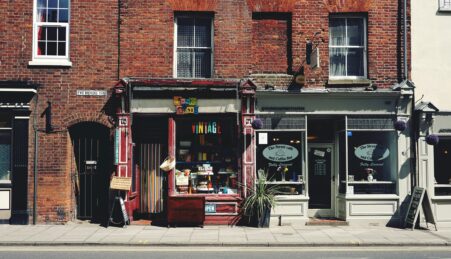
Wednesday 26 March, 2014
Manchester Metropolitan University’s (MMU) Institute of Humanities and Social Science Research (iHSSR) held a symposium entitled Encountering Corpses. The sold-out event took place at the Manchester Museum and was part of iHSSR’s Humanities in Public (HiP) programme.
With a theme that focused on the human corpse and its treatment through display, exhibition, sanctification, memorialisation, burial and disposal, the programme was divided into three panel sessions as well as a discussion session at the end of the day.

Sue Fox, Berthold Schoene, Helen Malarky, Kolyn Amor and Paul Koudounaris
Speakers addressed questions of how we deal with various issues, including the ethics of displaying bodies in museums and in art – challenges faced by public services in managing the increased number of deaths amongst the ageing population – whether it was right to dig up and move Richard III, and whether it is right to view death sites of genocide victims as a form of tourism.
The event was convened by Dr Craig Young, reader in Human Geography at MMU, and iHSSR Project Manager, Helen Malarky.
Presentations were given by speakers who discussed the theme based on their respective areas of specialism.
Included in the programme were guided tours of some actual human remains in the Museum’s collection as well as a feedback session for participants to discuss their experience of viewing those remains.
Duncan Light, visiting Geography and Environmental Management research fellow at MMU, who spoke on the theme of mobility said: “Corpses are often thought of as being static…in graves.” However, Dr Light went on to explain that there are times when corpses can be mobile. He gave examples of when bodies are exhumed either for reburial or for other reasons. This often requires that the exhumed bodies are transported over far distances.
Manchester Museum’s Curator of Archaeology, Bryan Stitch, delivered a talk that focused on how museums and visitors respond to ‘the dead’. Central to this session was the discovery of the Lindow Man, a bog body discovered at Lindow Moss near Manchester in August 1984. Lindow Man was subsequently transported away from the locality which resulted in mixed responses from the community because, as Bryan explained ‘the removal of Lindow Man was seen as removing an asset…’ There were also mixed reactions from local residents and experts when Manchester Museum ran a temporary exhibition about Lindow Man in 2008-9.

Artwork by Paul Koudounaris
In the session titled Egyptian Mummies in the Museum: Authenticity, Curiosity and Revulsion, Dr Campbell Price, Manchester Museum’s Curator of Egypt and Sudan, delivered an engaging talk as he explained that Egyptian mummies continue to be one of the most popular attractions in museums. Using Manchester Museum as a case study, Dr Price spoke about how museum visitors have responded to displays of Egyptian mummies over time. One of his predecessors, Margaret Murray, is credited with helping to change museum visitors’ attitudes towards Egyptian mummies. Dr Price said: “Margaret Murray wanted to show that ancient Egyptian human remains could be subjected to scientific examination like other objects.” With this, he said, Margaret Murray started the practice of the unravelling and examination of Egyptian mummies.
Other guest speakers included authors, cemetery tour operators, as well as other MMU personnel namely, Faye Sayer, Sam McCormick and Sue Fox.
Audience members engaged with the speakers during question and answer sessions. I spoke to Charlotte Stevens who works at the Holocaust and Human Rights Museum in Belgium, who said: “I had never thought about the issue of how to look at dead bodies in museums…in our museum we don’t expose dead bodies we can only show pictures.” Charlotte went on to say that she would be going on the tour of Manchester’s Southern Cemetery and would also be attending the art exhibition at Sacred Trinity Church, Salford.
I also spoke to Michala Hulme, who said: “I deal more with how people die so a lot of the stuff I’ve seen today has been really, really interesting in terms of the visuals – especially in terms of Egypt.” Michala, who is a Genealogist, Historian and PhD student, further commented that: “Because my work is very 19th Century it’s been fascinating to hear about what was going on so very far back especially in terms of Egypt.”
Encountering Corpses Art Exhibition is running from Friday 28th March until Thursday 10th April 2014 at Sacred Trinity Church, Church Street, Salford, M3 5DW. Viewing daily Monday to Friday from 12noon – 4pm, weekend viewing dependent on Church timetable. You can download the Encountering Corpses Exhibition brochure in PDF format here.
Feyi Raimi-Abraham is a legally qualified employee relations specialist and is currently training as a journalist. Passionate about art, Feyi promotes the arts through her blog Zaynnah Magazine. Previous Zaynnah Magazine interviewees include the artist El Anatsui, the radio presenter Rosemary Laryea, the Japan based afrobeat band Kingdom Afrocks, as well as the reggae artist Tarrus Riley. You can follow Feyi on Twitter @zayynah1.








No Comments
Encountering Corpses – The Postmortem Notes | Institute of Humanities & Social Science Research | Manchester Metropolitan University (MMU)